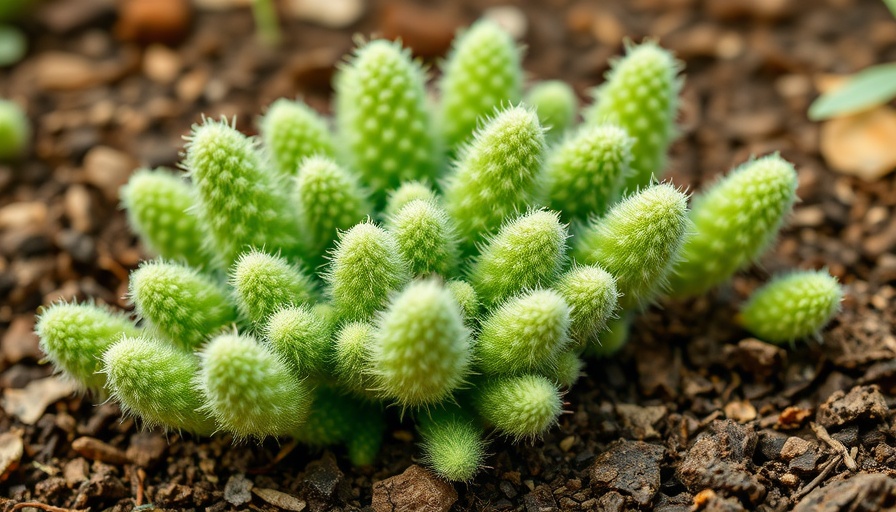
Why Lamb’s Ear is a Must-Have for Your Garden
If you’ve been searching for a plant that blends texture, beauty, and ease of care, lamb’s ear (Stachys byzantina) is an excellent choice. Known for its fuzzy leaves that resemble lamb’s ears, this perennial thrives in various conditions and provides an interesting focal point in any garden. With its low water requirements and hardiness, it's perfect for both novice and seasoned gardeners.
Planting Lamb’s Ear: Your Step-by-Step Guide
Planting lamb’s ear is straightforward. This herbaceous perennial prefers full sun but can also adapt to partial shade.
- Ideal Soil: Well-draining soil is critical. Lamb’s ear thrives in various soil types, whether clay, loam, or sand, making it highly adaptable.
- Spacing: Space your plants 12-18 inches apart to allow them room to grow and spread.
- Planting Depth: When planting seeds, simply place them at the surface level, but if you're transplanting, ensure they are at the same depth as their container.
After planting, a weekly watering is usually sufficient, but keep an eye on drying conditions, especially during heat waves.
Understanding Cultivars for Added Charm
Lamb’s ear comes in multiple cultivars, offering different aesthetics for your space. While the traditional green leaves are stunning, consider adding variety with hybrids like ‘Cotton Boll,’ which showcases stunning white flowers. This diversity can create a striking contrast when planted alongside colorful annuals or other perennials, enhancing your overall garden design.
Maintenance Tips for Thriving Growth
Caring for lamb’s ear is relatively low-maintenance:
- Pruning: Regularly prune back the flowering stalks to maintain a tidy appearance and encourage more vigorous growth.
- Mulching: Applying garden mulch can help retain soil moisture while suppressing unwanted weeds.
- Bear in Mind: This plant can spread quickly, so monitor its growth and be prepared to contain it when necessary.
Common Garden Pests and Diseases
Lamb’s ear is generally resilient against pests, but watch for aphids and other common garden insects that might strike. An organic pesticide can be your first line of defense. Also, ensure that water doesn't pool around the roots, which can lead to rot—a common issue for many garden plants.
Creating an Inviting Landscape with Lamb’s Ear
Incorporate lamb’s ear into your landscaping projects for stunning ground cover. Its soft texture works beautifully in border gardens, alongside pathways, or even as a backdrop for more vibrant flowers. You can easily create a lovely seating area or a shaded space with its forgiving nature.
Embracing Lamb’s Ear in Sustainable Gardening
By choosing lamb’s ear, you’re making a sustainable choice. This drought-resistant plant reduces the need for irrigation, making it an ideal addition to any eco-conscious garden. Pair it with pollinator-friendly plants to enhance your garden's biodiversity, inviting beneficial insects and wildlife.
Final Thoughts: Elevate Your Garden Aesthetics
Whether you are transforming your front yard or designing backyard landscaping ideas, lamb’s ear provides versatility and charm. Combining this fuzzy perennial with other garden plants or flowers can lead to a stunning flower garden that is also rich in texture and greenery. Start now, and see how easy it is to create a sustainable and beautiful garden space where you and your family can relax and enjoy nature's beauty.
 Add Row
Add Row  Add
Add 




Write A Comment